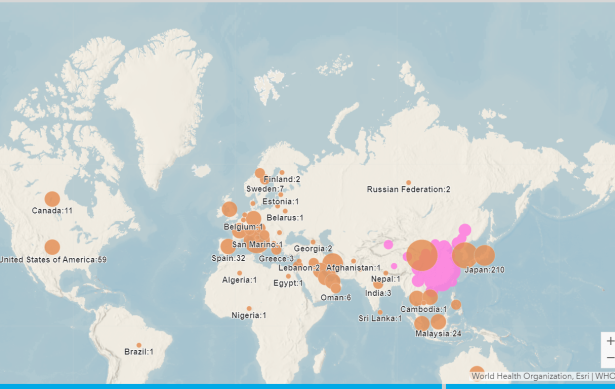The news of the day is all about Coronavirus – the World Health Organization (WHO) name for the virus is COVID 19 – its spread, health effects, and impacts on economies worldwide. Airplane travel means being in a sealed metal tube for hours in close proximity to scores of strangers. Anyone who flies domestically and internationally might get a little concerned.

Not willing to totally give up on flying until the crisis is over, I’ve looked into what experts are saying about the risks of travel (airline travel particularly) and ways to mitigate them. The good news is international airliners use HEPA filters like ones in operating rooms that remove 99.97% of dangerous airborne particles. The bad news is air filters do not prevent contact with viral particles on surfaces or those expelled in coughs or sneezes.
Below are some of the ideas I’m adopting to minimize my exposure, hopefully.
- Review the Centers For Disease Control (or applicable local agency) and WHO recommendations, if any, for the destination and any intermediate stops.
- Weigh the advantages of flexible/refundable fares versus cost.
- Monitor reservations frequently for cancellations or changes.
- In the event of a cancellation or unfavorable change, request a refund even if the rules of the fare purchased do not permit it. A refund can be spent on anything or any airline. A credit is only good for travel on the original carrier. If a flight is to or through a country suffering from a major coronavirus outbreak, some airlines are allowing credits or refunds even if the rules of the fare purchased do not permit it. When contacting the airline, if the rep doesn’t give the desired answer, HUCB (hang up call back).
- Avoid shaking hands, high fives or other hand contact.
- Choose a window seat. Window seats are farthest from the aisle and are best for minimizing contact with others.

- Limit or eliminate bathroom or stretch breaks.
- Sit next to one or more empty seats, if possible.
- Wash hands frequently and thoroughly and/or use hand sanitizer.
- Use sanitary wipes to clean tray tables, video remotes, seat controls, etc.
- Review medical insurance to ensure it covers international travel and carry documents describing the coverage. I have a policy with Allianz that has very good coverage including medical evacuation.
- Wear a face mask. This is controversial because masks are most effective at preventing the wearer from infecting others not the other way around. Only N95 face mask/respirators create a good facial seal. But reports are they are too uncomfortable to wear for extended periods. I’ll wear the less bulky face masks as a way to prevent touching my mouth and nose.
- Cough or sneeze into a tissue or the elbow rather than the hand.
- Cancel travel if the threat level elevates to a dangerous level.

Final Thoughts
Using these precautions is obviously no guarantee of staying disease free. On the other hand, with community spread having been detected in America, staying home is also no safety guarantee.
Would you add items to this list? Are there any items on the list you disagree with?

I am worried too as I love traveling and yes soon this coming April. So far the country is fewer people have CV than any other rich countries but still you never know as still 1 month away! Lots of businesses have been affected & a lot of inconveniences too!
LikeLiked by 1 person
The virus is a huge inconvenience for travelers. The effect of the virus is changing constantly. Keep checking with CDC and state health authorities for the latest updates and recommendations for staying safe.
LikeLiked by 1 person
and because of that I just posted a blog about it 🙂 pls check when you have time thanks!
LikeLiked by 1 person
Yes. I was on 6 legs last week, and thought about it every step of the way.
LikeLiked by 1 person
Great and timely advice!
LikeLiked by 1 person
great suggestions; based on your recommendation, we also bought a policy through Allianz. let’s hope that travel returns to normal soon!
LikeLiked by 1 person
I have my fingers crossed on travel normalcy. My guess is COVID 19 will cause problems for months, maybe until there is a vaccine. This is one problem Trump can’t bully his way out of.
LikeLiked by 2 people
we fly home in about two weeks, fingers crossed.
LikeLike